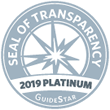
CLINICAL THYROIDOLOGY FOR PATIENTS
A publication of the American Thyroid Association
Summaries for Patients from Clinical Thyroidology (from recent articles in Clinical Thyroidology)
Table of Contents | PDF File for Saving and Printing
THYROID NODULES
The Bethesda classification for thyroid biopsies is effective for clinical management of thyroid nodules
ABBREVIATIONS & DEFINITIONS
Thyroid nodule: an abnormal growth of thyroid cells that forms a lump within the thyroid. While most thyroid nodules are non-cancerous (Benign), ~5% are cancerous.
Thyroid Ultrasound: a common imaging test used to evaluate the structure of the thyroid gland. Ultrasound uses soundwaves to create a picture of the structure of the thyroid gland and accurately identify and characterize nodules within the thyroid. Ultrasound is also frequently used to guide the needle into a nodule during a thyroid nodule biopsy.
Thyroidectomy: surgery to remove the entire thyroid gland. When the entire thyroid is removed it is termed a total thyroidectomy. When less is removed, such as in removal of a lobe, it is termed a partial thyroidectomy.
Thyroid fine needle aspiration biopsy (FNAB): a simple procedure that is done in the doctor’s office to determine if a thyroid nodule is benign (non-cancerous) or cancer. The doctor uses a very thin needle to withdraw cells from the thyroid nodule. Patients usually return home or to work after the biopsy without any ill effects.
Inadequate/Insufficient biopsy: this happens with not enough cells are obtained during the biopsy to provide a diagnosis. This occurs in 5-10% of biopsies. This often results in the need to repeat the biopsy.
Non-diagnostic thyroid biopsy: this happens when some atypical cells are found but not enough to provide a diagnosis. This occurs in 5-10% of biopsies. This often results in the need to repeat the biopsy.
Indeterminate thyroid biopsy: this happens usually when the diagnosis is a follicular or hurthle cell lesion. Follicular and hurthle cells are normal cells found in the thyroid. Current analysis of thyroid biopsy results cannot differentiate between follicular or hurthle cell cancer from noncancerous adenomas. This occurs in 15-20% of biopsies and often results in the need for surgery to remove the nodule.
Suspicious thyroid biopsy: this happens when there are atypical cytological features suggestive of, but not diagnostic for malignancy. Surgical removal of the nodule is required for a definitive diagnosis.
BACKGROUND
Thyroid nodules are very common and often need to be evaluated for cancer. The possibility that a nodule contains a thyroid cancer is 5-8%. Fine needle aspiration biopsy (FNAB) is the best test for diagnosing cancer outside of surgery; however, the description of FNAB results is different across medical centers and pathologists. The Bethesda system suggests a six category classification system to report thyroid FNAB results: 1. Non-diagnostic/unsatisfactory, 2. Benign/Non-cancerous, 3. Indeterminate, 4. Suspicious for follicular cancer, 5. Suspicious for cancer and 6. Positive for cancer. The aim of this study was to determine how well these categories matched results obtained from surgical specimens between different medical centers.
THE FULL ARTICLE TITLE:
Bongiovanni M et al. The Bethesda System for Reporting Thyroid Cytopathology: a meta-analysis. Acta Cytol. 2012;56:333-9. Epub July 25, 2012; doi: 10.1159/000339959.
SUMMARY OF THE STUDY
The authors reviewed 8 published studies including 25445 thyroid FNABs. All thyroid FNAB samples were classified according to the Bethesda system. A subgroup of 6362 (25%) patients subsequently underwent thyroidectomy and the final pathology of these specimens was compared to the FNAB result. The category distribution was as follows: 1. Nondiagnostic/unsatisfactory – 13% (ranging between 2-24% among the institutions) – of those 16.8% were cancerous at final pathology, 2. Benign/Non-cancerous – 59% (range, 39-74%) – of those only 3.7% were cancerous at final pathology, 3. Indeterminate – 9.6% (range, 3-27%) – of those 15.9% were cancerous at final pathology, 4. Suspicious for follicular cancer – 10.1% (range, 1-25%) – of those 26.1% were cancerous at final pathology, 5. Suspicious for cancer – 2.6% (range, 1-6%) – of those 75.2% were cancerous at final pathology and 6. Positive fore cancer – 5.4% (ranging between 2-16%) – of those 98.6% were cancerous at final pathology.
WHAT ARE THE IMPLICATIONS OF THIS STUDY?
The categorizing of FNAB results according to Bethesda system was different among medical centers. However, this study shows that the Bethedsda classification for thyroid FNAB is effective for clinical management of thyroid nodules. In patients with benign or inadequate FNAB results, additional clinical factors, such as a family history of thyroid cancer, the size of the nodule or suspicious findings on ultrasonography should be considered for the decision to do surgery. The authors recommend to repeate FNAB when the diagnosis is indeterminate (with 16% possibility of cancer about the same as the nondiagnostic category). In this group, molecular markers may help to find out which patients should proceed to surgery. All patients in “suspicious for cancer” category with a very high possibility of cancer (75%) should undergo surgery.
— Jamshid Farahati, MD
ATA THYROID BROCHURE LINKS
Thyroid cancer: http://www.thyroid.org/cancer-of-the-thyroid-gland
Thyroid Surgery: http://www.thyroid.org/patients/patient_brochures/surgery.html
Thyroid Nodules: http://www.thyroid.org/what-are-thyroid-nodules


